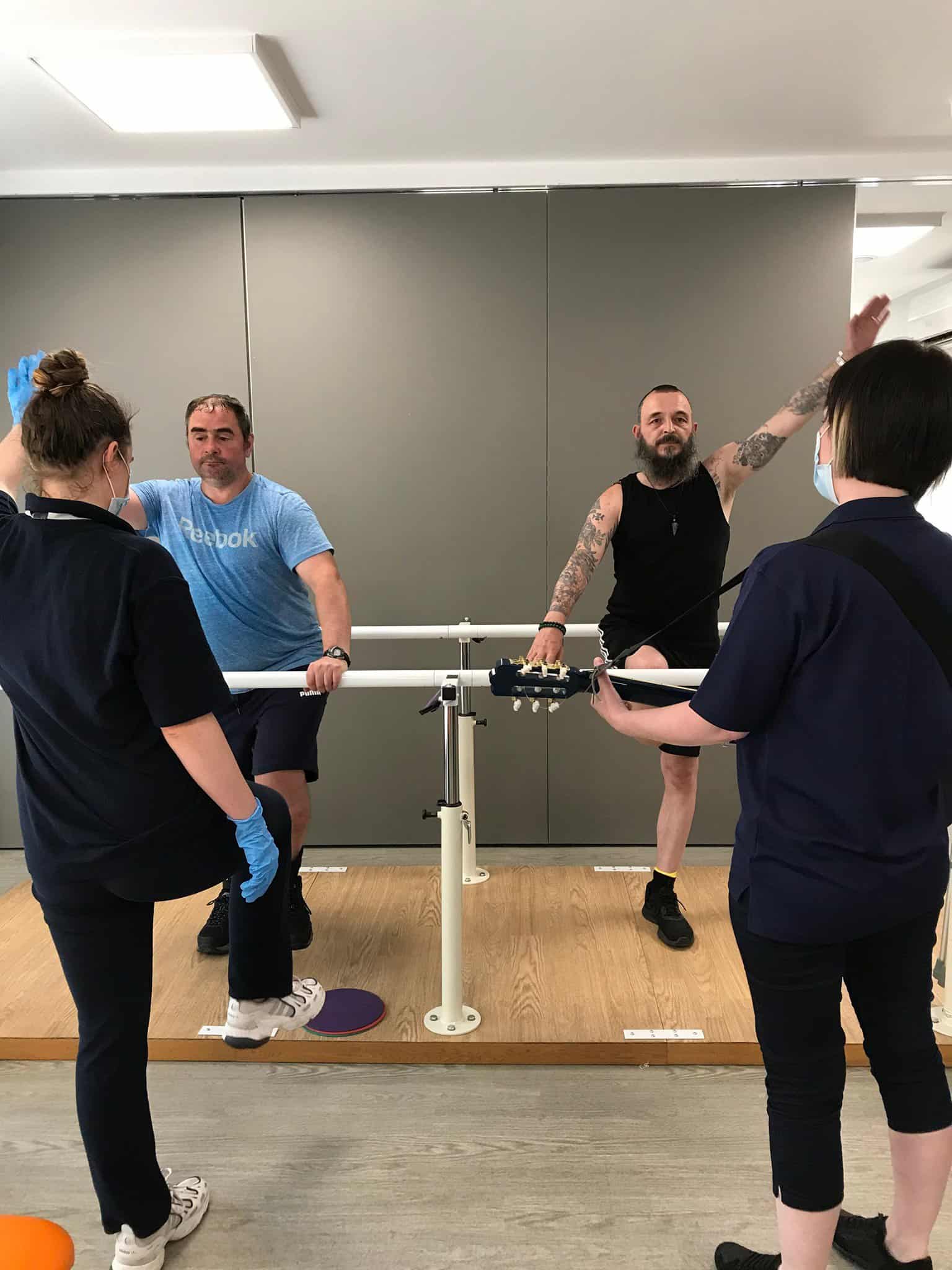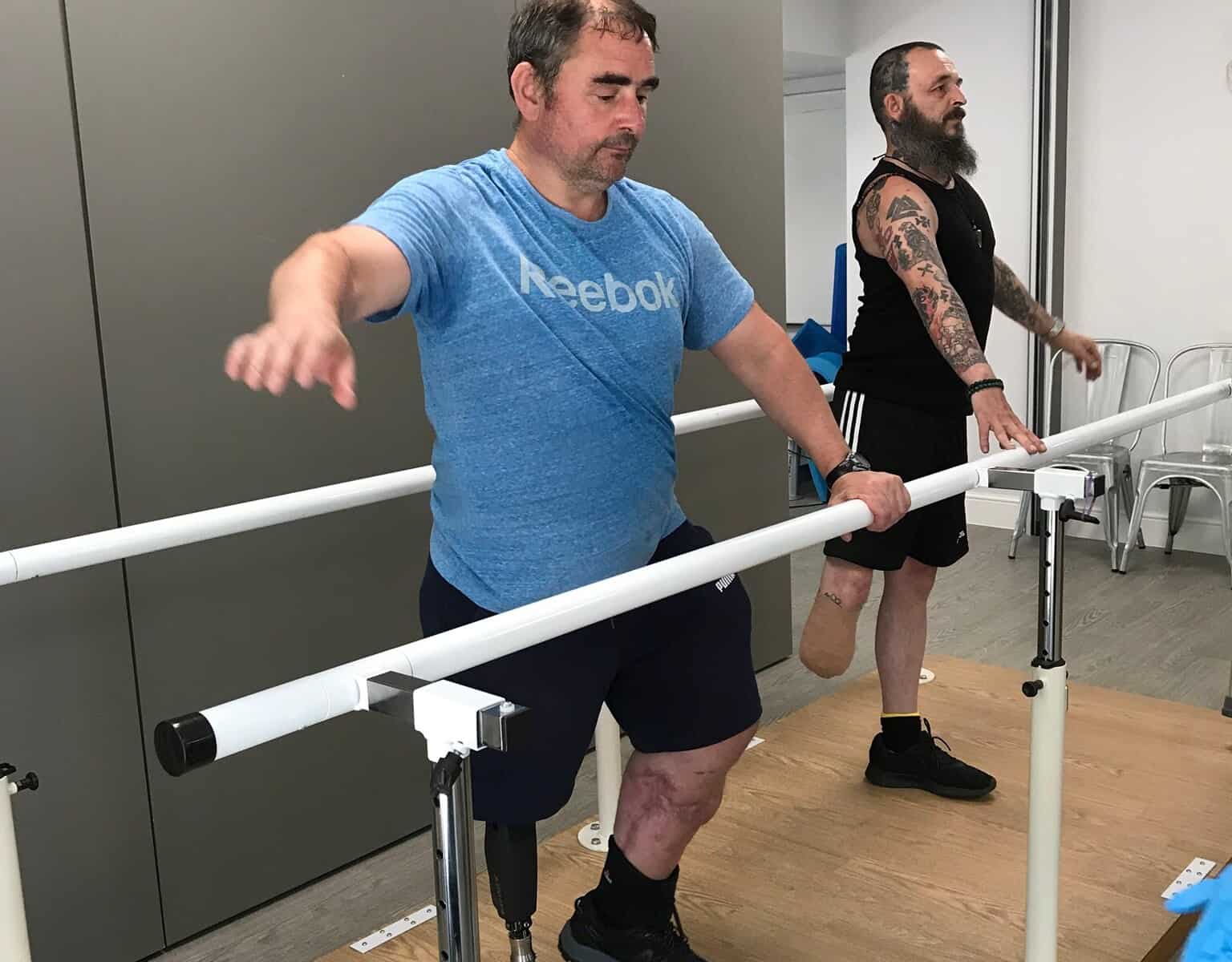
Rebekah Keenan (NMT) and Hannah Wright (Senior Physiotherapist) after discussions with the clinical director, Toria Chan decided to trial NMT techniques with Physiotherapy interventions in a one to one setting and a group environment. Rebekah and Hannah have seen continuing improvements amongst clients in their ability to walk further in distance with improved balance, speed and a more efficient gait cycle.
NMT traditionally works with clients with brain injury. STEPS thought it would be interesting to see how the techniques translate to amputee client groups, and Hannah and Rebekah have led on the development of this project.
“Quite a lot of the clients who have sustained traumatic amputations often have TBIs, which is partly where the idea came from, and we wanted to see what would happen if we used NMT among our amputee clients whether they had a TBI or not.”
“While NMT is more traditionally used among clients with brain injury, the introduction among amputees has been hugely effective”, says Hannah.
During lockdown Rebekah Keenan (NMT) and Hannah Wright (Senior Physiotherapist) created a unique amputee balance group as something new to offer the clients, which is demonstrating its value through the ongoing progress being seen amongst clients. The balance group works with a variety of NMT techniques and Physiotherapy interventions. The associated benefits of attending amputee balance group are increased confidence and mental strength amongst these clients.
“It was during lockdown and our clients were here anyway, we were bouncing ideas around and we thought ‘Let’s give it a go’.”
“In our groups, clients can talk about any amputation or prosthesis issues, or even about their general wellbeing, because they have the space to talk about it openly. Everyone in the group gives each other a bit of encouragement,” says Rebekah.
“We’ve just invested in some metronome watches, which can be strapped around the wrist, leg or across the chest, and we can link up to five of these watches so everyone can be in sync at the same time.”
Rhythm alongside musical cues from Rebekah & simple verbal cues, prompts specific movement patterns designed & led by Hannah to assist amputees in the rehabilitation of postural control, balance, weight shifting stability, re-orientation of one’s centre of gravity, proprioception (awareness of the prosthetic limb’s position as it moves in space), coordinated arm movements & efficient gait.
“The sessions are really popular,” says Rebekah.
Alongside the amputee balance group Rebekah and Hannah work with the amputee clients on a one to one basis to focus on gait reeducation using Rhythmic Auditory Stimulation technique, which is a is a scientific walking technique that uses a metronome rhythm and musical cues to entrain walking pattern and acts as a facilitating stimulus for training efficient movement patterns and optimum gait.
“We do a 10 metre walk test to assess clients’ walking pace & their stride length. Then following RAS gait retraining using the metronome rhythm the test can be repeated regularly over time to see difference in outcome. We consistently see improvements in pace, stride length & general fluidity of walking”, says Hannah.
“There is also a test to assess how far clients can walk in two minutes and we measure the improvement in distance. We challenge clients by asking them to the walk in the grounds on lots of different terrains, like pebbles and different gradients.”
“We take multiple visual recordings throughout a client’s rehabilitation so that we can see the improvements in their gait cycle over time - it’s lovely to look back over progress & share this with clients so that they can see how far they have come.” says Rebekah.
Rebekah and Hannah retest the outcome measures as this provides motivation for the clients. “We test progress approximately every six weeks and then review this with their case managers, and we have seen improvement, every time without exception,” says Hannah.
In addition to the physical progress, the changes in confidence - while not quantifiable in the same way - are there for all to see.
“We notice quite often that our amputee clients initially tend to like to have their evening meals in their bedrooms” says Hannah.
“However now, they are coming down to the cafe for their meal with the rest of the clients and engaging with them. I think it’s given them the confidence to do that.”
Going forward, STEPS and Chroma are looking into producing joint research to support the feasibility of NMT among amputees, as little to none currently exists.
“We’ve been exploring this and there seems to be very little both in this country and abroad in terms of research,” says Rebekah.
We are really excited about where any joint research and development may lead and looking forward to embarking on an innovative project together!
